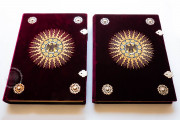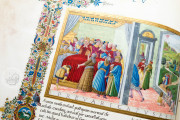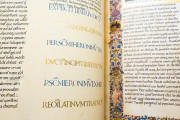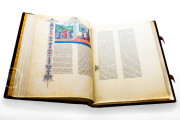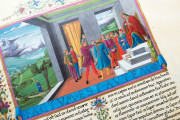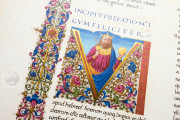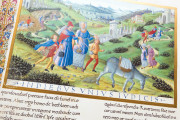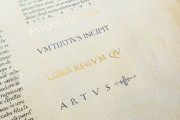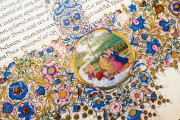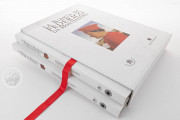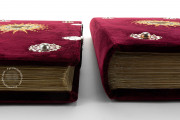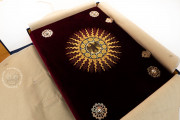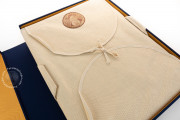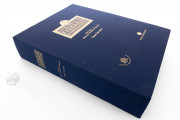The two-volume Bible of Federico da Montefeltro was produced in Florence under the supervision of Vespasiano da Bisticci, a publisher who had frequently worked for the manuscript’s patron, the Duke of Urbino. The first volume of the book of Christian scripture was finished in February 1477, and the second in June 1478, as recorded by the renowned scribe Ugo Comminelli da Mézières. A team of artists led by Francesco di Antonio del Chierico worked on the illumination, which includes four frontispieces, fifty-two incipit pages, and 122 historiated initials.
Crafted in Florence, the Bible of Federico da Montefeltro represents one of the most exquisite manuscripts in the Duke's renowned library and stands as a paramount exemplar of Renaissance illumination.
A Monument to Manuscript Tradition in the Age of Print
This magnificent Bible emerged during a pivotal historical moment when Gutenberg's printing technology was rapidly transforming textual production across Europe. The manuscript distinguishes itself through its exceptional dimensions and the remarkable quantity of illuminated folios—thirty-five of which demonstrate painterly sophistication of the highest order, transcending mere decoration to achieve the status of independent artistic compositions.
Collaborative Artistry of Distinguished Masters
The textual transcription was executed by the master scribe Ugo Comminelli da Mézières, while the illuminations were primarily created by Francesco di Antonio del Chierico, a preeminent Florentine miniaturist whose services were graciously extended to the Duke of Urbino by Lorenzo de' Medici himself. This institutional collaboration underscores the manuscript's significance within Renaissance diplomatic and cultural networks.
The Bible further benefits from contributions by several other celebrated illuminators, including Attavante degli Attavanti, Francesco Rosselli, and—scholarly consensus suggests—Davide Ghirlandaio, sibling of the renowned Domenico Ghirlandaio. This collaborative execution by leading artists of the period elevates the manuscript's art historical importance.
Visual Dialogue with Renaissance Artistic Traditions
The illuminations demonstrate sophisticated engagement with the broader visual lexicon of quattrocento Florence. These miniatures reflect and reinterpret the stylistic innovations and iconographic traditions established by major Tuscan Renaissance masters, creating a visual dialogue between manuscript illumination and monumental painting.
Enlightened Patronage
Federico da Montefeltro, Duke of Urbino (1422-1482), transformed his small duchy's capital into a preeminent center of Renaissance culture through strategic patronage. His court attracted distinguished architects and artists including Luciano Laurana, Melozzo da Forlì, Giusto di Gand, and Piero della Francesca, whose collective contributions established Urbino as a crucible of artistic innovation.
The Duke's establishment of one of the most extensive Renaissance libraries represents a crowning achievement of his cultural program. This bibliophilic enterprise employed numerous scribes for textual reproduction before manuscripts were sent to Vespasiano da Bisticci's prestigious Florentine workshop, where master illuminators transformed them into treasures of Renaissance visual culture.
We have 1 facsimile edition of the manuscript "Bible of Federico da Montefeltro": Bibbia di Federico da Montefeltro facsimile edition, published by Franco Cosimo Panini Editore, 2005
Request Info / Price


